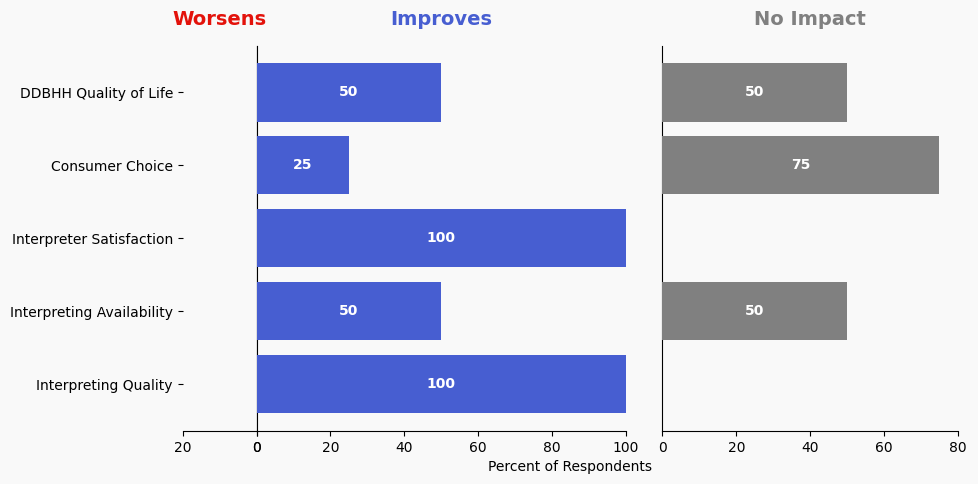112 Centralize Information about Communities of Practice on a Website
Issue: Interpreters often experience vicarious trauma, compassion fatigue and related issues due to working in stressful settings. Interpreters need mental health supports in place
Proposed Solution: Organizations centralize and promote communities of practice (COPs) as a means of support, connection and information sharing for interpreters. Current COPs include: Peer Support and Consultation Project for Interpreters (PSCPI), developed by the Whole Interpreter Enterprises (Arlyn Anderson) Interpreting Institute for Reflection-in-Action (IIRAS), Robyn Dean and Amanda R. Smith MRID’s Educational Interpreter Community of Practice Twin Cities Freelance Interpreters Group Brightworks for Educational Interpreters Share information about COPs as they support interpreters’ mental health and longevity in the field. Commission share a listing of reflective practice groups and other communities of practice in a central repository website. These groups also allow newer interpreters to develop and strengthen interpreting and decision-making skills, create community and learn self-care tools early to protect against vicarious trauma, compassion fatigue and burn out.
Expected outcome: Increased availability of interpreters due to greater retention of interpreters because they have more support and connection. Increased quality of interpreters due to reflective practice bringing greater awareness and professional practice to the work.
Who is impacted: Interpreters
Timeline: 6 months

Summary of Support Image Description
The stacked bar charts show how respondents rated their level of support and the total number of responses. The percentage for the five support levels is shown from left to right: Strongly Oppose (Dark Red), Oppose (Light Red), Neutral (Yellow), Support (Light Blue), and Strongly Support (Dark Blue).
Respondents may identify with multiple subgroups. The overall level of support is:
Overall
Strongly Oppose: 1%
Oppose: 1%
Neutral: 19%
Support: 46%
Strongly Support: 33%
Click to see the detailed image description for each subgroup.
Interpreter
Strongly Oppose: 2%
Oppose: 2%
Neutral: 17%
Support: 43%
Strongly Support: 36%
Certified Interpreter
Strongly Oppose: 2%
Oppose: 2%
Neutral: 20%
Support: 38%
Strongly Support: 38%
DDBHH Consumer
Strongly Oppose: 0%
Oppose: 0%
Neutral: 20%
Support: 46%
Strongly Support: 34%
System Stakeholder
Strongly Oppose: 3%
Oppose: 0%
Neutral: 18%
Support: 50%
Strongly Support: 28%
Overview of Respondents Opting for In-Depth Solution Analysis
After indicating their support level, 4% of the 96 respondents opted in to further assess whether the solution would worsen or improve on five metrics. Of the opt-in reviewers (4 respondents), 50% supported the solution, 50% were neutral on the solution, and 0% opposed the solution.
The remaining 92 respondents did not opt in to further assess the solution. Of these people, 80% support the solution, 17% were neutral on the solution, and 2% opposed the solution.
Reviewer Evaluation of Solution Effectiveness

Solution Effectiveness Image Description
The stacked bar charts show how respondents assessed the effectiveness of this solution based on five metrics. For each metric, the percentage of respondents is shown from left to right: Worsens (Red), Improves (Blue), No Impact (Gray).
DDBHH Quality of Life
Makes It Worse 0%
Makes It Better 50%
No Impact 50%
Interpreter Satisfaction
Makes It Worse 0%
Makes It Better 100%
No Impact 0%
Consumer Choice
Makes It Worse 0%
Makes It Better 25%
No Impact 75%
Interpreting Availability
Makes It Worse 0%
Makes It Better 50%
No Impact 50%
Interpreting Quality
Makes It Worse 0%
Makes It Better 100%
No Impact 0%
Reviewer Feedback and Insights
Interpreter
No comments were submitted.
Deaf, DeafBlind, Hard of Hearing
No comments were submitted.
System Stakeholder
No comments were submitted.
PREVIOUS SOLUTION
111 Expand Communities of Practice to Focus on Retention of Emerging Interpreters
Issue: Some emerging interpreters feel a lack of connectedness to the interpreting community. New interpreters do not always have opportunities to develop relationships with interpreters at all stages in their career. If interpreters have stronger relationships within the interpreting community, they have more sense of belonging and a network to support them. With a support network, new interpreters are better prepared to work together in different settings.
NEXT SOLUTION
113 Hiring Entities Provide More Employment Options for Interpreter Compensation
Issue: Interpreters employment options are not flexible enough for retaining the interpreter workforce in some settings. A theme in reporting was interpreters needing regular full-time employment with benefits; however, not all interpreters are seeking full-time employment.
Leave a Reply